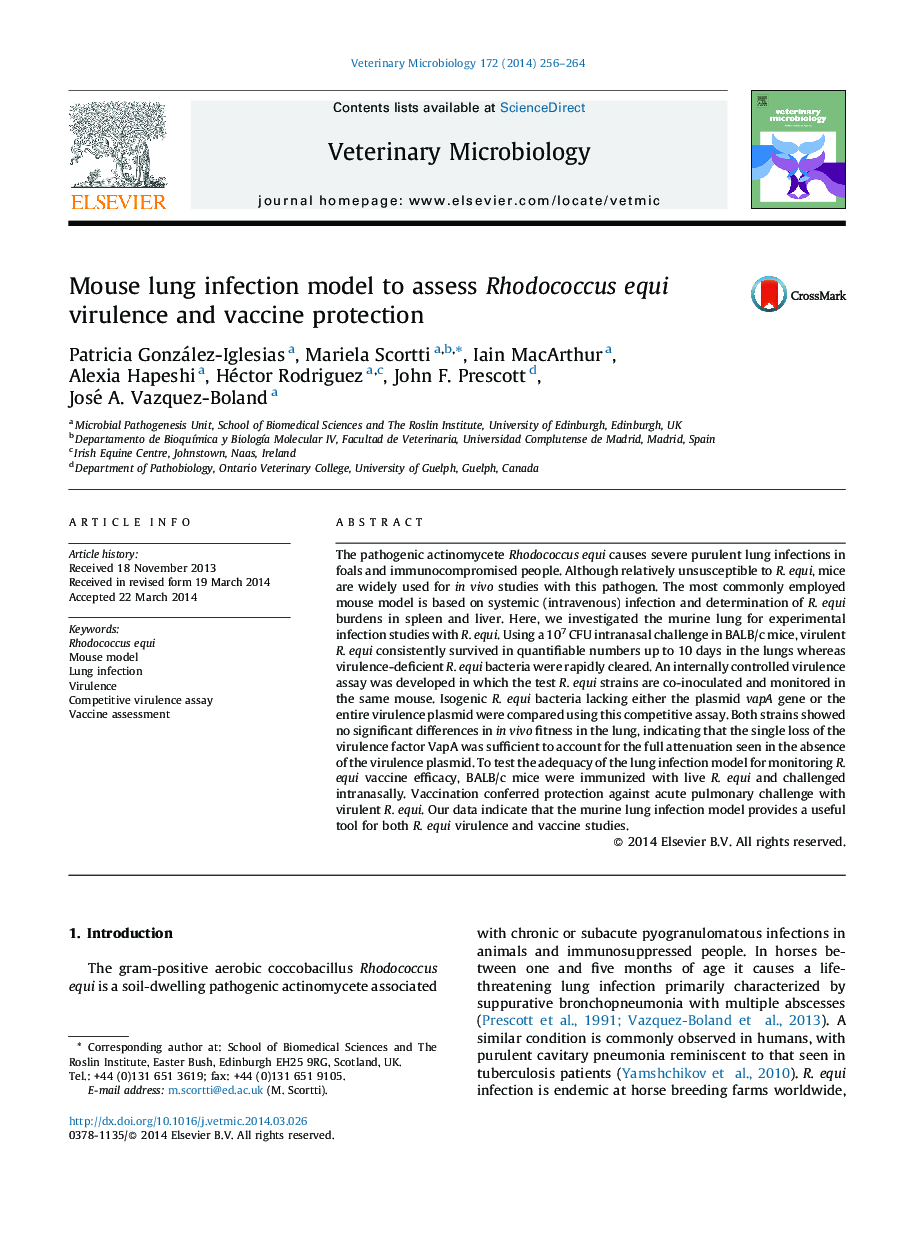| Article ID | Journal | Published Year | Pages | File Type |
|---|---|---|---|---|
| 5800836 | Veterinary Microbiology | 2014 | 9 Pages |
The pathogenic actinomycete Rhodococcus equi causes severe purulent lung infections in foals and immunocompromised people. Although relatively unsusceptible to R. equi, mice are widely used for in vivo studies with this pathogen. The most commonly employed mouse model is based on systemic (intravenous) infection and determination of R. equi burdens in spleen and liver. Here, we investigated the murine lung for experimental infection studies with R. equi. Using a 107Â CFU intranasal challenge in BALB/c mice, virulent R. equi consistently survived in quantifiable numbers up to 10 days in the lungs whereas virulence-deficient R. equi bacteria were rapidly cleared. An internally controlled virulence assay was developed in which the test R. equi strains are co-inoculated and monitored in the same mouse. Isogenic R. equi bacteria lacking either the plasmid vapA gene or the entire virulence plasmid were compared using this competitive assay. Both strains showed no significant differences in in vivo fitness in the lung, indicating that the single loss of the virulence factor VapA was sufficient to account for the full attenuation seen in the absence of the virulence plasmid. To test the adequacy of the lung infection model for monitoring R. equi vaccine efficacy, BALB/c mice were immunized with live R. equi and challenged intranasally. Vaccination conferred protection against acute pulmonary challenge with virulent R. equi. Our data indicate that the murine lung infection model provides a useful tool for both R. equi virulence and vaccine studies.
